Argentina Travel Guide
Navigate Argentina's wonders: Buenos Aires, Patagonia, and beyond

Argentina, a country known for its vibrant culture, stunning landscapes, and passionate people, offers a plethora of experiences for travelers. Whether you’re seeking natural wonders, bustling cities, or unique cultural encounters, Argentina has it all. In this comprehensive travel guide, we will delve into the reasons to visit Argentina, the best time to go, circuits ideas, must-see places, off-the-beaten-track destinations, budget considerations, money matters, essential preparations, practical information, and more. So fasten your seat belts and get ready for an adventure through Argentina!
Reasons to Visit Argentina
Argentina is a captivating country that entices travelers from around the world. Here are a few compelling reasons to include Argentina in your travel bucket list:
- Breathtaking Landscapes: From the majestic Andes Mountains and the awe-inspiring Iguazu Falls to the expansive Pampas and the stunning Patagonian glaciers, Argentina is a haven for nature lovers. The diversity of landscapes will leave you in awe.
- Vibrant Culture: Argentina is famous for its passionate tango, lively festivals, and rich cultural heritage. Immerse yourself in the local traditions, indulge in delicious cuisine, and dance the night away in Buenos Aires, the tango capital of the world.
- Wine and Gastronomy: Argentina’s world-renowned Malbec wine and mouthwatering cuisine are a treat for food and wine enthusiasts. Explore the vineyards in Mendoza, indulge in juicy steaks, and savor the flavors of Argentinean empanadas.
- Adventure and Outdoor Activities: Whether you’re an adrenaline junkie or an outdoor enthusiast, Argentina offers a wide range of adventure activities. Trek through the stunning landscapes of Patagonia, go horseback riding in the Andean foothills, or embark on a thrilling wildlife safari.
- Warm Hospitality: Argentinians are known for their warm and friendly nature. Interact with the locals, experience their warm hospitality, and create lifelong memories.

Best Time to Visit Argentina
Weather
Argentina’s climate varies greatly due to its vast size and diverse geography. The country is located in the Southern Hemisphere, which means the seasons are opposite to those in the Northern Hemisphere. Here’s a breakdown of the weather in different regions:
- Buenos Aires: Buenos Aires has a temperate climate with hot summers (December to February) and mild winters (June to August). Spring (September to November) and autumn (March to May) offer pleasant weather.
- Patagonia: Patagonia experiences cool summers and cold winters. The best time to visit is during the summer months of December to February when the weather is milder and ideal for outdoor activities.
- Iguazu Falls: The weather at Iguazu Falls is tropical, with high humidity and frequent rain showers. It’s recommended to visit from April to June or August to October when the weather is pleasant, and the crowds are smaller.
Touristic Seasons
Argentina’s touristic seasons are influenced by school holidays and local vacations. The peak tourist season in Argentina is during the summer months of December to February when locals and international visitors flock to coastal destinations. It’s important to note that popular tourist attractions may be crowded during this time.

Holidays
Argentina celebrates various holidays and festivals throughout the year. Here are some of the main events and festive days:
Festive Days
- New Year’s Day (January 1st): Celebrated with fireworks, parties, and family gatherings.
- Carnival (February/March): Colorful parades and festivities take place in many cities across the country.
- Easter (March/April): Religious processions and celebrations occur throughout Argentina.
- Independence Day (July 9th): Commemorates Argentina’s declaration of independence from Spain with patriotic events and parades.
Main Events
Here’s a monthly breakdown of some of the main events in Argentina:
- January: Buenos Aires Tango Festival, Mar del Plata International Film Festival
- February: Carnival in Gualeguaychu, Fiesta Nacional de la Vendimia in Mendoza
- March: Festival Nacional de la Chacarera in Santiago del Estero
- April: Semana Santa (Holy Week) celebrations throughout the country
- May: Feria Internacional del Libro (International Book Fair) in Buenos Aires
- June: Fiesta Nacional del Sol in San Juan
- July: Día de la Independencia celebrations, Festival Internacional de Cine de Mar del Plata
- August: Tango World Championship in Buenos Aires
- September: Festival Internacional de Cine de San Sebastián
- October: Oktoberfest in Villa General Belgrano, Buenos Aires International Jazz Festival
- November: Fiesta Nacional de la Tradición in San Antonio de Areco
- December: Buenos Aires International Contemporary Dance Festival, Christmas celebrations
Transition Sentence: Now that we have explored the best time to visit Argentina and highlighted the main events month by month, let’s move on to planning your itineraries.

Circuit Ideas in Argentina
Argentina offers a diverse range of circuits and itineraries to suit different travel preferences. Whether you have a weekend, a week, 10 days, 2 weeks, 3 weeks, or a whole month, there’s something for everyone. Here are some circuit ideas to inspire your travel plans:
1 Weekend
- Buenos Aires: Spend a weekend exploring the vibrant capital city. Visit iconic landmarks like Plaza de Mayo, Casa Rosada, and Teatro Colon. Immerse yourself in the tango culture and enjoy a lively nightlife.
1 Week in Argentina
- Buenos Aires (3 days): Discover the charms of Buenos Aires, including the colorful neighborhood of La Boca and the trendy district of Palermo.
- Iguazu Falls (3 days): Experience the awe-inspiring power of the Iguazu Falls, one of the New Seven Wonders of Nature.
- Mendoza (1 day): Indulge in wine tasting tours and enjoy the scenic beauty of the vineyards in Mendoza.
10 Days in Argentina
- Buenos Aires (3 days): Explore the cultural and historical landmarks of Buenos Aires, such as Recoleta Cemetery and San Telmo Market.
- Patagonia (4 days): Venture into the stunning landscapes of Patagonia, including El Calafate and Perito Moreno Glacier.
- Bariloche (3 days): Discover the natural beauty of Bariloche, known for its picturesque lakes and snow-capped mountains.
2 Weeks in Argentina
- Buenos Aires (3 days): Dive into the vibrant atmosphere of Buenos Aires and soak up the tango culture.
- Iguazu Falls (2 days): Experience the breathtaking beauty of Iguazu Falls from both the Argentinean and Brazilian sides.
- Salta and Jujuy (4 days): Explore the stunning landscapes of Northwestern Argentina, including the colorful hills of Purmamarca and the Quebrada de Humahuaca.
- Mendoza (3 days): Indulge in wine tasting tours and enjoy the stunning views of the Andes Mountains.
3 Weeks in Argentina
- Buenos Aires (4 days): Immerse yourself in the lively atmosphere of Buenos Aires and discover its diverse neighborhoods.
- Iguazu Falls (3 days): Witness the power and beauty of the magnificent Iguazu Falls.
- Patagonia (7 days): Embark on a journey through the breathtaking landscapes of Patagonia, including El Calafate, Torres del Paine, and Ushuaia.
- Mendoza and the Wine Regions (4 days): Explore the vineyards of Mendoza and taste some of Argentina’s finest wines.
1 Month in Argentina
- Buenos Aires (5 days): Spend ample time exploring the cosmopolitan capital city, delving into its culture and cuisine.
- Iguazu Falls (3 days): Discover the mesmerizing waterfalls from different angles and take in the surrounding rainforest.
- Patagonia (10 days): Embark on an epic Patagonian adventure, including visits to El Chalten, El Calafate, and the awe-inspiring Perito Moreno Glacier.
- Mendoza and the Wine Regions (7 days): Enjoy wine tastings, indulge in culinary delights, and relax in the beautiful vineyards of Mendoza.
Transition Sentence: Now that we’ve covered some exciting circuit ideas, let’s move on to the must-see places in Argentina.
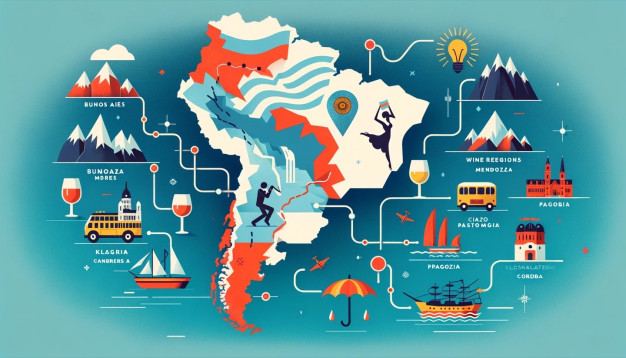
Places to Visit in Argentina
Argentina boasts an array of captivating destinations that cater to various interests. Here are some must-see places that should be on every traveler’s itinerary:
Must-See
- Buenos Aires: Immerse yourself in the vibrant atmosphere of the capital city, explore its distinct neighborhoods, and indulge in tango performances and delicious cuisine.
- Iguazu Falls: Witness the awe-inspiring power of the world-famous Iguazu Falls, a UNESCO World Heritage site that stretches across the border of Argentina and Brazil.
- Patagonia: Discover the breathtaking landscapes of Patagonia, including the Perito Moreno Glacier, Fitz Roy Mountain, and Tierra del Fuego National Park.
- Bariloche: Experience the beauty of the Argentinean Lake District, known for its stunning lakes, snow-capped mountains, and outdoor adventure opportunities.
- Mendoza: Delight in wine tastings, explore the vineyards, and enjoy the stunning backdrop of the Andes Mountains.
- Salta: Marvel at the colonial architecture, visit the scenic Cafayate wine region, and explore the rugged landscapes of the Quebrada de Humahuaca.
- Ushuaia: Journey to the southernmost city in the world and embark on adventures in Tierra del Fuego National Park and the Beagle Channel.
- El Calafate: Witness the massive Perito Moreno Glacier, take boat tours on Lake Argentino, and explore Los Glaciares National Park.
- Puerto Madryn: Observe the incredible marine wildlife, including penguins, sea lions, and whales, in the Valdes Peninsula.
- Córdoba: Explore the colonial architecture of Córdoba’s historic center, visit Jesuit Estancias, and enjoy outdoor activities in the surrounding Sierras de Córdoba.

Off the Beaten Track
- El Chalten: Hike through the stunning landscapes of Los Glaciares National Park and witness the majestic Mount Fitz Roy.
- Purmamarca: Marvel at the Seven Colored Hill and explore the unique landscapes of the Quebrada de Humahuaca.
- El Bolsón: Visit this charming mountain town known for its artisanal craft market and natural beauty.
- Villa General Belgrano: Experience the Oktoberfest celebrations in this German-influenced village.
- Colonia Carlos Pellegrini: Discover the wetlands of Esteros del Iberá and spot an array of wildlife, including caimans, capybaras, and colorful birds.
- Talampaya National Park: Explore the rugged landscapes, impressive rock formations, and ancient petroglyphs in this UNESCO World Heritage site.
- Maimará: Admire the stunning “Paleta del Pintor” (Painter’s Palette) hill and visit the nearby Tilcara and Humahuaca.
- Tandil: Enjoy outdoor activities in the picturesque hills of Tandil and visit the famous “Movediza Stone.”
- San Martin de los Andes: Experience the tranquility of this picturesque town nestled in the Andes Mountains, known for its stunning lakes and forests.
- Caminito, La Boca: Explore the colorful streets of La Boca neighborhood in Buenos Aires, known for its artistic vibe and tango culture.
Transition Sentence: Now that we’ve explored the must-see places in Argentina, let’s move on to discussing the budget for traveling to Argentina.

Budget for Traveling to Argentina
When planning your trip to Argentina, it’s essential to consider the costs involved. Here’s an overview of the average prices for various aspects of travel:
Hotels
Accommodation prices in Argentina vary depending on the location and type of accommodation. In major cities like Buenos Aires and tourist destinations, you can find a range of options from budget hostels to luxury hotels. On average, a budget traveler can expect to spend around $20-40 USD per night for a hostel or budget hotel, while mid-range options range from $50-100 USD per night. Luxury accommodations can cost upwards of $150 USD per night.
Meals
Argentina is known for its delicious cuisine, and dining out can be a delightful experience. The cost of meals in Argentina varies depending on the type of restaurant and location. A basic meal at a local eatery or a fast-food joint can cost around $5-10 USD. In mid-range restaurants, expect to spend $15-30 USD per person for a three-course meal. Fine dining establishments can cost upwards of $50 USD per person.
Transportation
Getting around in Argentina can be affordable and convenient. Here’s an overview of transportation costs:
- Domestic Flights: Domestic flights in Argentina can vary in price depending on the distance and time of booking. On average, a one-way ticket for a domestic flight can range from $50-200 USD, depending on the route and airline.
- Buses: Argentina has an extensive bus network that connects major cities and towns. Bus fares are generally affordable, and prices vary depending on the distance traveled. A typical bus journey can cost anywhere from $5-30 USD, depending on the distance.
- Taxis and Ride-Sharing: Taxis and ride-sharing services like Uber are widely available in major cities. Taxi fares vary depending on the distance traveled and the city, but as a rough estimate, expect to pay around $1-2 USD per kilometer.
Tours
If you’re interested in guided tours and excursions, prices can vary depending on the type and duration of the tour. Here are some average prices:
- City Tours: A half-day city tour in Buenos Aires can cost around $30-50 USD per person.
- Iguazu Falls Tour: A full-day tour to Iguazu Falls, including transportation and park entrance fees, can range from $100-150 USD per person.
- Wine Tours: Wine tours in Mendoza can vary depending on the number of wineries visited and the inclusions. On average, a full-day wine tour can cost around $80-120 USD per person.
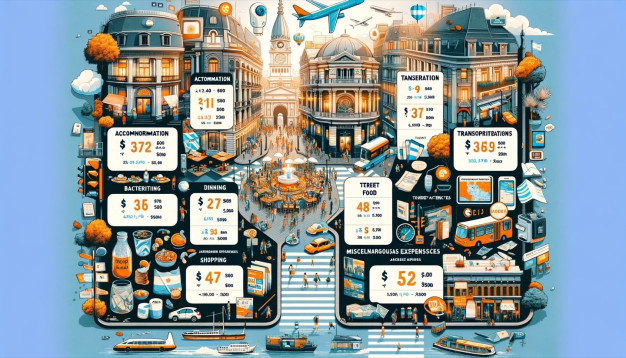
Tips for Traveling on a Budget
- Eat like a local: Explore local markets and street food stalls for affordable and delicious meals.
- Use public transportation: Opt for public buses and subways, which are cheaper than taxis or private transfers.
- Take advantage of free activities: Many cities offer free walking tours, public parks, and museums with free admission.
- Consider hostel accommodations: Hostels are a budget-friendly option and often offer communal kitchens for self-catering.
- Plan in advance: Booking flights, accommodations, and tours in advance can often result in better deals and discounts.
Transition Sentence: Now that we’ve covered the budget considerations for traveling to Argentina, let’s move on to discussing money matters in the country.
Money in Argentina
Understanding the currency, payment options, and tipping etiquette in Argentina is essential for a smooth travel experience. Here’s what you need to know:
Paying
The official currency of Argentina is the Argentine Peso (ARS). Cash is widely accepted, especially for smaller establishments and local markets. Credit and debit cards are also accepted in most places, but it’s always good to carry some cash for smaller expenses or places that don’t accept cards.
Money
When it comes to money, it’s recommended to carry a mix of cash and cards. ATMs are widely available in cities and towns, and most accept international cards. It’s advisable to inform your bank about your travel plans to avoid any issues with card usage.
ATMs
ATMs, known as “cajeros automáticos,” are readily available in Argentina. Look for ATMs affiliated with major banks to minimize transaction fees. It’s advisable to withdraw larger amounts to minimize the number of withdrawal fees.
Cash
It’s always good to have some cash on hand for small purchases, tips, and places that only accept cash. Currency exchange offices, known as “cambios,” can be found in major cities and tourist areas. Compare rates and fees before exchanging your money.

Haggling
Haggling is not a common practice in Argentina, especially in formal establishments. However, in some markets or when purchasing certain products or services, you may try negotiating a better price. Use your judgment and be respectful during the negotiation process.
Tipping
Tipping is customary in Argentina, and it’s appreciated for good service. Here are some general guidelines for tipping:
How much to give?
- Drivers: For taxi drivers, it’s common to round up the fare or add a small tip, especially if they assist with luggage. For private drivers or tour guides, a tip of around 10-15% of the total cost is appropriate.
- Staff & Assistants (Muleteers, Chief Cook): If you’re on a guided trek or expedition, it’s customary to tip the support staff, such as muleteers and the chief cook. A tip of around $5-10 USD per day, per staff member, is customary.
- Guides: For guided tours or excursions, a tip of around 10% of the tour cost is customary, depending on the quality of the service.
Restaurants & Bars
- In restaurants, it’s customary to leave a tip of around 10% of the total bill. Some restaurants may include a service charge (“cubierto”) in the bill, so check before tipping.
- In bars, rounding up the bill or leaving loose change is appreciated.
Transition Sentence: Now that we’ve covered money matters and tipping etiquette, let’s move on to essential preparations before traveling to Argentina.
Before Leaving to Argentina
Before embarking on your adventure to Argentina, there are a few important things to consider. Let’s explore some essential preparations:
Visas and Entrance Requirements to Travel to Argentina
Citizens of many countries, including the United States, Canada, the United Kingdom, France, Switzerland, and Belgium, do not require a visa to enter Argentina for tourism purposes. However, it’s essential to check the specific visa requirements based on your nationality and the duration of your stay. Generally, a valid passport is required with a minimum validity of six months from the date of entry. You may also be asked to provide proof of onward travel.
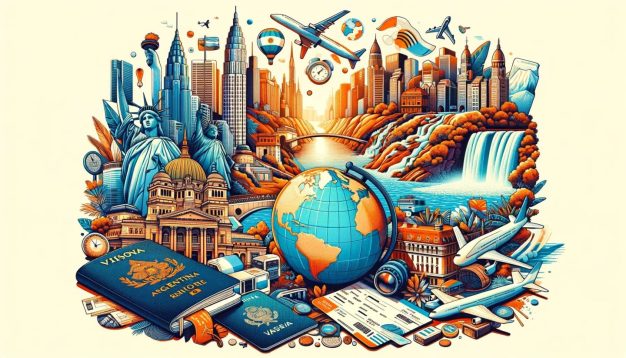
Useful Addresses
Here are the addresses and contact details of the embassies of some countries commonly visited by travelers to Argentina:
- US Embassy in Argentina: Address: Av. Colombia 4300, Buenos Aires. Phone: +54 11 5777-4533. Email: BuenosAires-ACS@state.gov. Website: https://ar.usembassy.gov/
- Canadian Embassy in Argentina: Address: Tagle 2828, Buenos Aires. Phone: +54 11 4808-1000. Email: bairs-cs@international.gc.ca. Website: https://www.argentina.gc.ca/
- UK Embassy in Argentina: Address: Dr. Luis Agote 2412, Buenos Aires. Phone: +54 11 4808-2200. Email: consularsection.buenosaires@fco.gov.uk. Website: https://www.gov.uk/world/organisations/british-embassy-buenos-aires
- French Embassy in Argentina: Address: Cerrito 1399, Buenos Aires. Phone: +54 11 4515-7000. Email: ambafrance@ambafrance-ar.org. Website: https://ar.ambafrance.org/
- Swiss Embassy in Argentina: Address: Carlos Pellegrini 1135, Buenos Aires. Phone: +54 11 4811-7533. Email: buenosaires@eda.admin.ch. Website: https://www.eda.admin.ch/buenosaires
- Belgium Embassy in Argentina: Address: Cerrito 1070, Buenos Aires. Phone: +54 11 4814-3580. Email: buenosaires@diplobel.fed.be. Website: https://diplomatie.belgium.be/argentina
Vaccines
Before traveling to Argentina, it’s advisable to check with your healthcare provider regarding recommended vaccines. The CDC (Centers for Disease Control and Prevention) recommends routine vaccinations, including measles-mumps-rubella (MMR), diphtheria-tetanus-pertussis, varicella (chickenpox), polio, and the yearly flu shot. Depending on the areas you plan to visit and the activities you’ll engage in, additional vaccines such as Hepatitis A, Typhoid, and Yellow Fever may be recommended.
Health Recommendations
Argentina is generally a safe country for travelers, but it’s always important to take necessary precautions for a healthy trip. Here are some health recommendations:
- Drink bottled or filtered water: While tap water is generally safe in major cities, it’s advisable to drink bottled water, especially in more remote areas.
- Protect yourself against mosquitoes: In certain regions, such as Iguazu Falls and the northern provinces, mosquitoes can be prevalent. Use mosquito repellent, wear long-sleeved clothing, and consider staying in accommodations with mosquito nets.
- Sun protection: Argentina’s sun can be strong, especially in summer. Remember to use sunscreen, wear a hat, and seek shade during the hottest hours of the day.
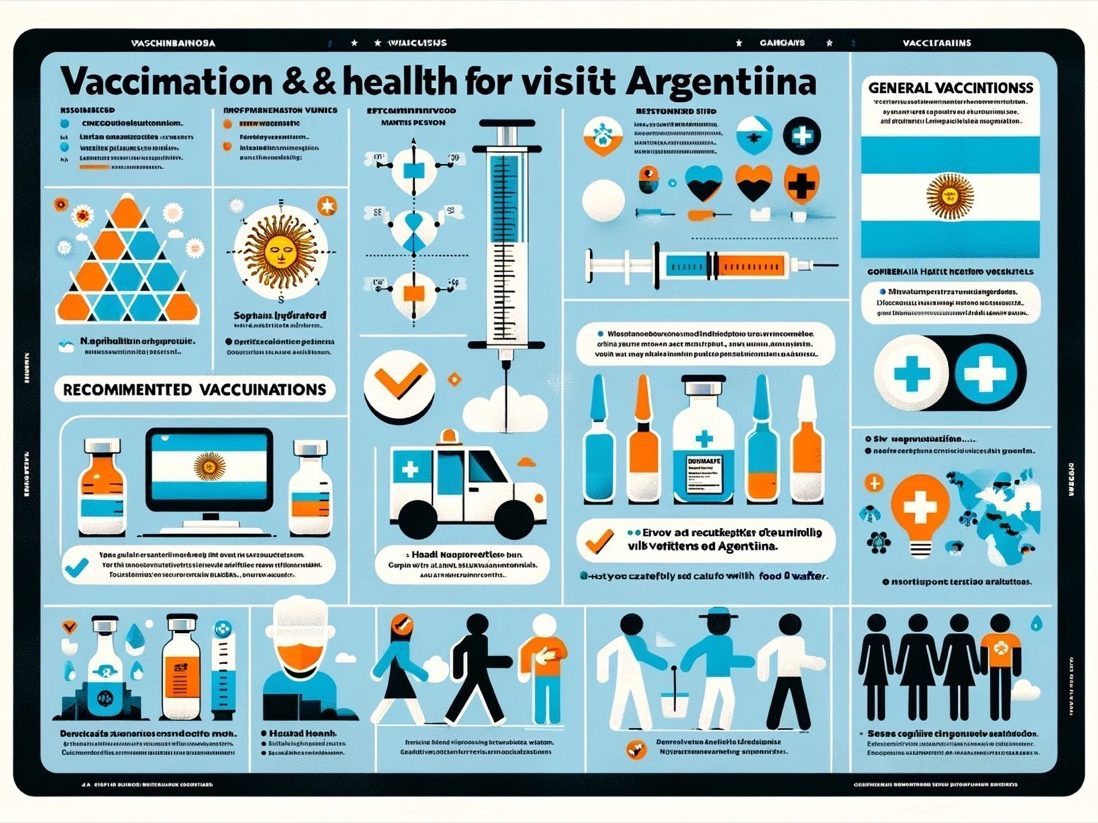
Packing List
When packing for your trip to Argentina, consider the following items:
- Clothing: Pack clothing suitable for the season and the regions you plan to visit. Layering is key, as weather conditions can vary.
- Comfortable shoes: Argentina offers various outdoor activities and excursions, so pack comfortable walking shoes or hiking boots.
- Adapters and chargers: Argentina uses Type C and Type I electrical outlets, so bring adapters if necessary.
- Travel insurance: It’s always recommended to have travel insurance that covers medical emergencies, trip cancellations, and lost belongings.
Safety in Argentina
While Argentina is generally safe for travelers, it’s important to take precautions to ensure a smooth and secure journey. Here are some safety tips:
- Stay vigilant: Keep an eye on your belongings and be cautious of your surroundings, especially in crowded areas or tourist hotspots.
- Use reputable transportation: Stick to licensed taxis or ride-sharing services, and avoid unofficial or unmarked vehicles.
- Research areas beforehand: Familiarize yourself with the areas you plan to visit and exercise caution in unfamiliar surroundings, especially at night.
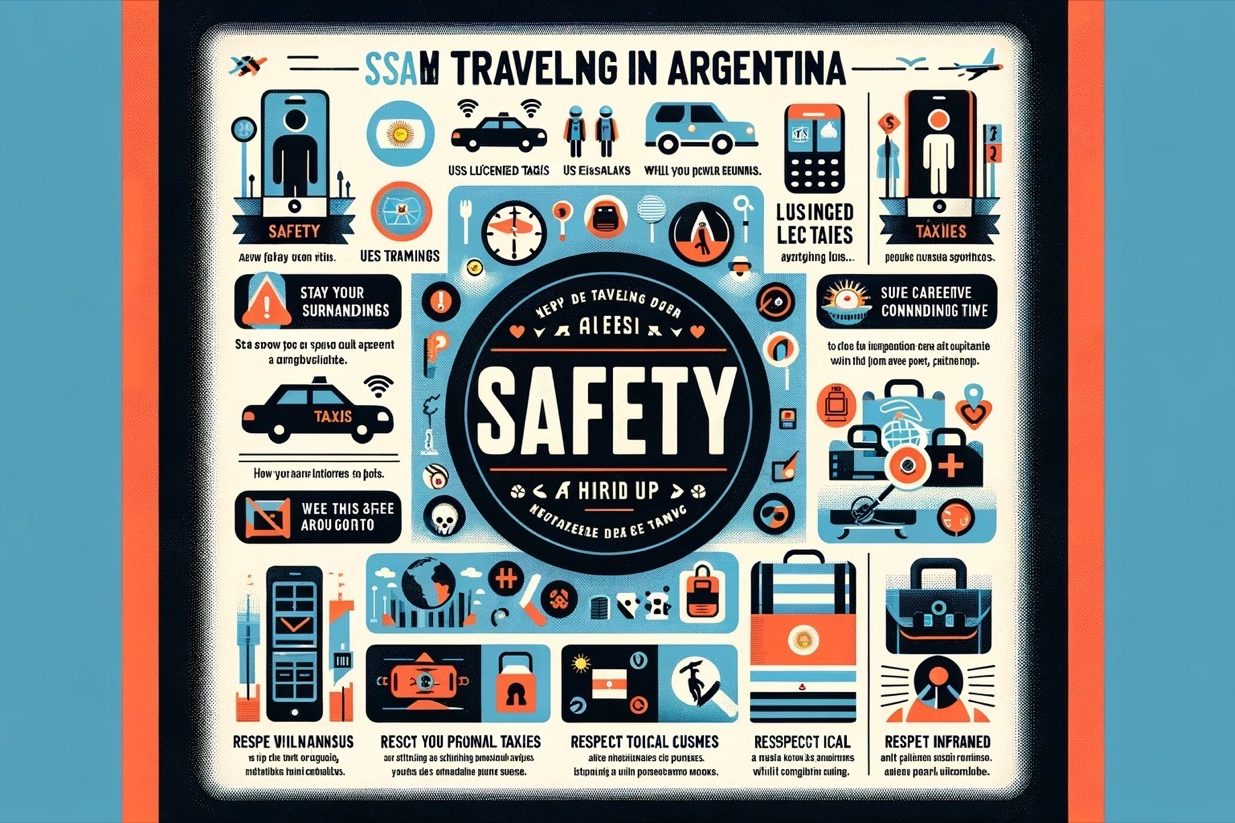
Useful Phone Numbers
In case of emergencies, it’s essential to have important phone numbers at hand. Here are some useful contacts:
- Bomberos (Firefighters): 100
- Police: 911
- Emergency Room (Hospital): 107
Transition Sentence: Now that we’ve covered essential preparations, let’s move on to practical information about traditions, phone and internet services, electricity, transportation, accommodation, and Spanish phrases.
Practical Information
Traditions (Do’s and Don’ts)
Argentina has its own unique traditions and customs. Here are some do’s and don’ts to keep in mind:
- Do greet with a kiss: In Argentina, it’s customary to greet friends and acquaintances with a kiss on the cheek. The number of kisses can vary depending on the region.
- Do try mate: Mate is a traditional Argentinean drink made from dried leaves of the yerba mate plant. If offered, it’s polite to accept and partake in the mate-sharing ritual.
- Don’t be late: Punctuality is highly valued in Argentina, so try to arrive on time for social engagements.
- Do engage in conversation: Argentinians are known for their friendliness. Engage in conversations, ask questions, and show genuine interest in their culture.
- Don’t rush meals: Meals in Argentina are a leisurely affair. Take your time to savor the food and enjoy the company.
Phone, Wifi, Hour, Electricity
Phone
When it comes to phone services in Argentina, you have several options:
- International Roaming: Check with your mobile provider regarding international roaming plans and charges.
- Buying a Local SIM Card: If you have an unlocked phone, you can purchase a local SIM card upon arrival. Providers such as Claro, Movistar, and Personal offer prepaid SIM cards with data and call packages.
Wifi
Wifi is widely available in hotels, cafes, and restaurants in major cities and tourist areas. However, in more remote areas or during outdoor excursions, wifi access may be limited.

Jet Lag
Argentina spans multiple time zones. Here’s a reference for jet lag from popular destinations:
- From New York: Argentina is usually 1 hour ahead of New York (EST).
- From San Francisco: Argentina is usually 4 hours ahead of San Francisco (PST).
- From London: Argentina is usually 3-4 hours behind London (GMT/BST).
- From Paris: Argentina is usually 4-5 hours behind Paris (CET/CEST).
Electricity
Argentina operates on 220-240 volts AC, with sockets that accept Type C and Type I plugs. It’s advisable to carry a universal adapter for charging your electronic devices.
Transport
Getting around in Argentina is relatively easy, thanks to its well-developed transportation infrastructure. Here’s an overview of the transportation options:
Getting Around by Planes
Argentina has an extensive domestic flight network, with several airlines offering flights to major cities and tourist destinations. Flying is a convenient option for covering long distances quickly.
Getting Around in the Cities
In major cities like Buenos Aires, public transportation is reliable and efficient. Subways, buses, and taxis are readily available. Subways and buses are affordable options for getting around the city.
Long Trips Across the Country
For long-distance travel, buses are a popular choice in Argentina. Comfortable, long-distance buses, known as “colectivos,” connect major cities and towns. Bus travel allows you to enjoy the scenic landscapes of the country.
Buses
Local buses are a common mode of transportation within cities and towns. In Buenos Aires, the Subte (subway) is an efficient way to navigate the city. Buses and subways have different fare structures, so check the pricing system before boarding.
Train
While train travel is not as extensive as buses in Argentina, there are scenic train journeys available, such as the Tren a las Nubes (Train to the Clouds) in Salta. In major cities, suburban trains connect nearby towns.
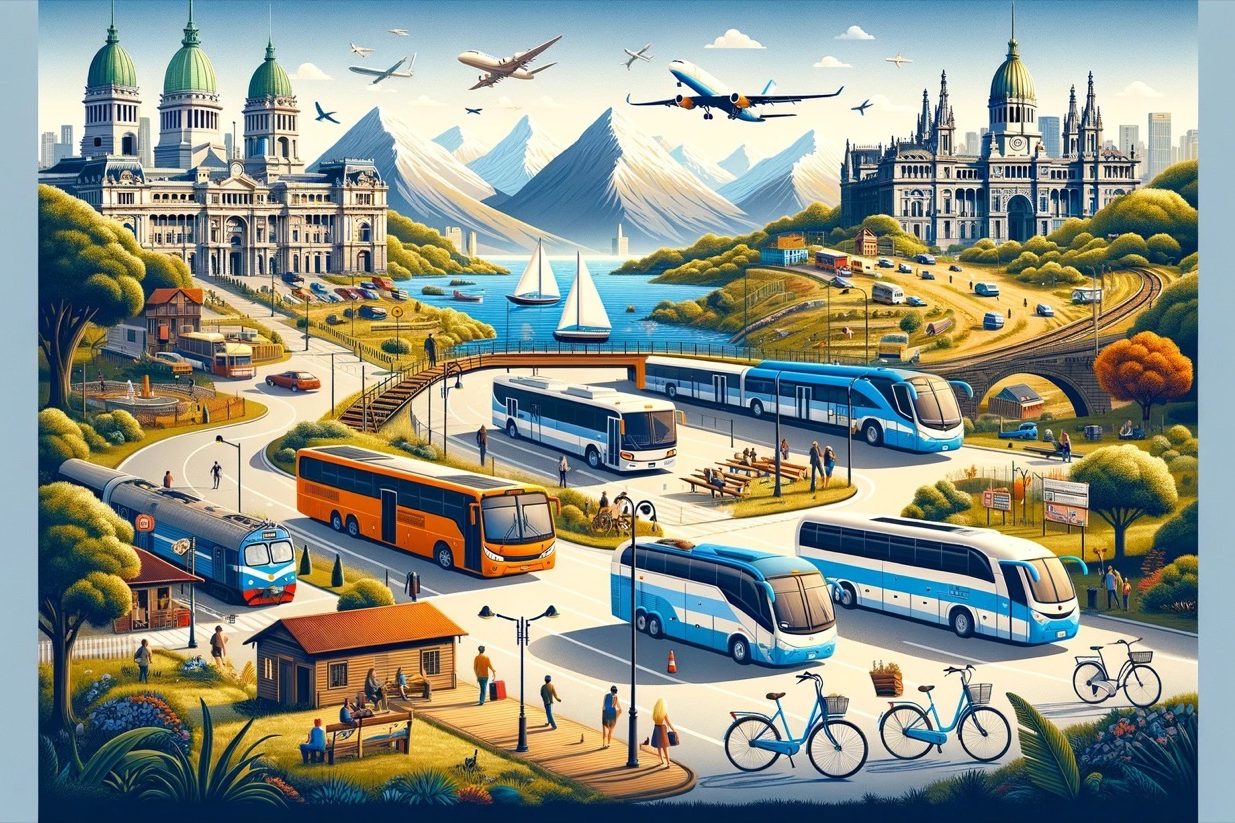
Accommodation in Argentina
Argentina offers a range of accommodation options to suit different budgets and preferences. Here are some options to consider:
Camping
If you’re an outdoor enthusiast, camping is a great way to experience Argentina’s natural beauty. National parks and camping grounds provide facilities for tents and RVs.
BnBs
Bed and breakfasts, known as “alojamientos” or “bed and breakfasts” in Argentina, offer a cozy and personalized accommodation experience. You can find B&Bs in both urban and rural areas.
Hostels
Hostels are a popular choice for budget travelers and backpackers. They offer dormitory-style rooms or private rooms at affordable rates. Hostels often provide common areas and communal kitchens for socializing and self-catering.
Hotels
Argentina has a wide range of hotels, from budget options to luxurious establishments. You can find international hotel chains, boutique hotels, and family-run accommodations. It’s advisable to book in advance, especially during peak travel seasons.
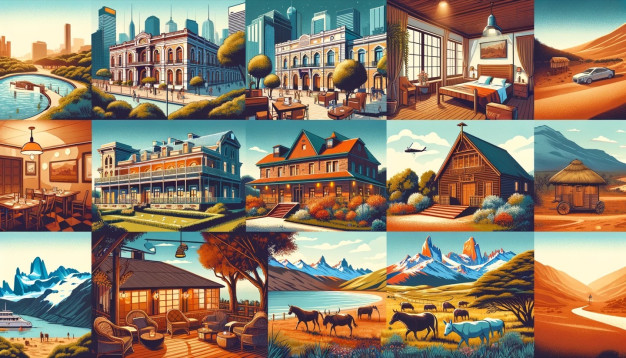
Lexique in Spanish
While many people in Argentina speak English, knowing a few basic Spanish phrases can enhance your travel experience. Here are some helpful phrases:
Argentina’s Slang
- Che: A common Argentinean term used for “dude” or “hey.”
- Boludo/a: An affectionate slang term used to refer to a friend, similar to “mate” or “buddy.”
- Re: Used to emphasize something, similar to “very” or “really.”
- Chamuyar: To flirt or sweet talk someone.
Basic Spanish Phrases
- Hola (OH-lah): Hello
- Gracias (GRAH-see-uhs): Thank you
- Por favor (por FAH-vor): Please
- **¿Dó
nde está…?** (DON-deh es-TAH): Where is…?
- Sí (SEE): Yes
- No (NO): No
Polite Formulas
Here are five polite formulas to use in Argentina:
- Buenos días (BWAY-nos DEE-uhs): Good morning
- Buenas tardes (BWAY-nas TAR-des): Good afternoon
- Buenas noches (BWAY-nas NO-ches): Good evening/night
- Disculpe (dees-KOOL-peh): Excuse me
- Por favor (por FAH-vor): Please
Useful Expressions
- Me puede ayudar (meh PWEH-deh ah-YOO-dar): Can you help me?
- No entiendo (no en-TEE-ehn-doh): I don’t understand
- ¿Cuánto cuesta? (KWAHN-to KWAY-stah): How much does it cost?
- La cuenta, por favor (la KWEHN-tah, por FAH-vor): The bill, please
- ¿Dónde está el baño? (DON-deh es-TAH el BA-nyoh): Where is the bathroom?
Transition Sentence: With these practical tips and phrases, you’re well-prepared to explore Argentina. Now, go forth and immerse yourself in the beauty, culture, and warmth of this incredible country!
Conclusion
Argentina is a destination that offers a multitude of experiences for travelers. From its stunning landscapes and vibrant cities to its rich culture and warm hospitality, Argentina is a country that captivates the hearts of those who visit. Whether you’re exploring the bustling streets of Buenos Aires, marveling at the natural wonders of Iguazu Falls, or trekking through the majestic landscapes of Patagonia, Argentina promises adventure, beauty, and unforgettable memories.
In this extensive travel guide, we’ve covered the reasons to visit Argentina, the best time to go, circuit ideas for different durations, must-see places, off-the-beaten-track destinations, budget considerations, money matters, essential preparations, practical information, and helpful Spanish phrases. Armed with this knowledge, you’re ready to embark on your Argentinean adventure.
So pack your bags, embrace the passionate spirit of Argentina, and let the beauty of this remarkable country enchant you. ¡Buen viaje! (Have a great trip!)